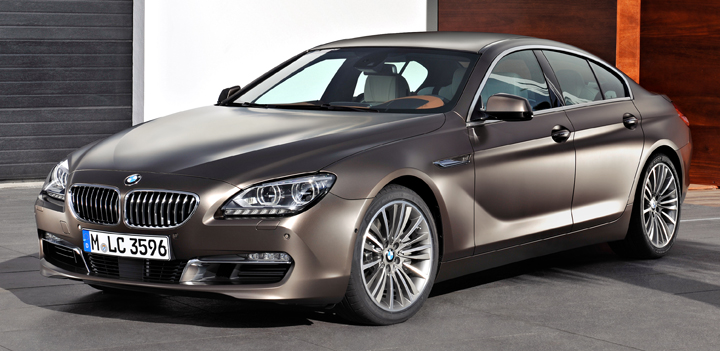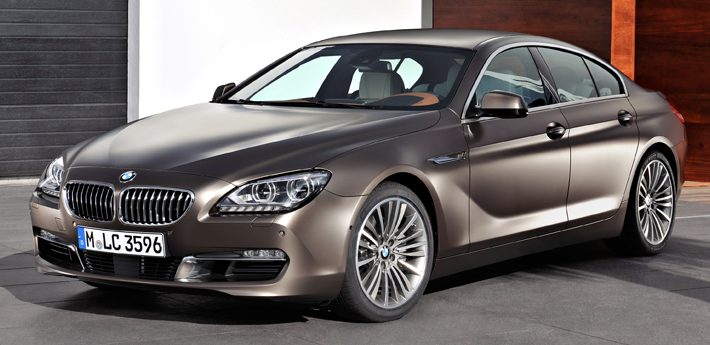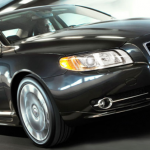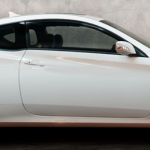
Note: This report supplements Consumer Guide Automotive’s full report on the 2013 BMW 6-Series Gran Coupe, a premium-midsize car that starts at $76,000.
Test car came equipped with: Driver Assistance Package, M Sport Package, Premium Sound Package, adaptive cruise control, leather dashboard trim, premium leather upholstery, 20-way multi-contour heated front seats, smartphone connection, 20-inch wheels and tires. Total MSRP with $895 destination = $101,495. (Note: Pricing approximate; vehicle was supplied with no window sticker or specific equipment list.)
Forget Glossy: I Prefer Satin and Matte Finishes
Powertrain: 315-horsepower 3.0-liter turbocharged inline 6-cylinder engine, 8-speed automatic transmission, rear-wheel drive.
Acceleration: The main-report comments ring true for me too, as does the 640i GC’s claimed 5.4-second 0-60 mph time. I also agree that BMW’s 3.0-liter turbo-6 is more than adequate for this car—I think it’s one of the world’s best engines—especially as the V8 model is likely thirstier and not hugely faster at a quoted 4.6 seconds 0-60. The alert 8-speed automatic contributes to the 640’s terrific mid-range passing power.
A pesky fly in this ointment is the stop/start system. As on other BMWs I’ve tried, the engine often shut down with a thud and started up with a shudder. The tremors aren’t large, but they are curious for a Bimmer, especially as some “lesser-brand” setups I’ve tried—Buick’s eAssist comes to mind—have been virtually undetectable. A related issue is the momentary “acceleration lag” that occurred after engine restart, as if the transmission needed a split second to hook up. All this was in regular Drive. I forgot to check if it also occurred in the tranny’s manual mode and/or in one or more of the Dynamic Drive Control settings. In any case, the tardy driveline response is irritating, so don’t forget to deactivate the stop/start if you hope to win an impromptu drag race with your Gran Coupe.
Fuel Economy: We averaged 21.3 mpg for nearly 140 miles of Phoenix-area driving split about 40/60 percent city/freeway. That’s a tad disappointing, being barely better than the EPA’s 20-mpg city estimate. And in case you’re wondering, we left the stop/start engaged the whole time.
Ride Quality: The test car had the optional 20-inch wheels with staggered-size Y-rated run-flat tires (Dunlop SP Sport Maxx GT). The fronts were 245/35s; the rears, massive 275/30Rs. Arizona roads are perhaps a bit smoother than Southern California’s, yet I thought this car rode best with the Dynamic Drive Control set to Comfort or Comfort+. The Sport setting just made for more thump, at least on these tires, though it never became abusive. However, I noticed minor structural shudder even in Comfort over some sharp bumps and rough patches—a major letdown for a car this costly.
Steering/handling/braking: The 2-door 6-Series is a large, heavy car, and this stretched 4-door version feels even more so. In other words, no 6-Series strikes me as “driving smaller” than it actually is. But the GC does drive as you’d expect of a big Bimmer, which is to say, very well. It’s planted and pretty flat through corners, changes path with fair dispatch, and has great brakes that seem more than up to the engine performance. My one gripe is low-speed steering effort that’s a bit heavy for my taste. It doesn’t inhibit maneuvering and matches the Gran Coupe’s character, but still . . . .
Quietness: In fact, it can be loud enough on some surfaces that you might need to turn up the stereo. At least the road rumble doesn’t completely mask the turbo-6’s lovely sounds—mechanical music of the very best kind.
5 Best-Looking Sedans and Wagons of the New Century
Controls: High-end BMWs tend to have more gadgets than the lower-priced models, and so more buttons, knobs, and switches to contend with. The Gran Coupe has the same basic control scheme as other 6-Series, and though it’s “standard BMW fare,” as the main report says, I think it works pretty well, all considered. Still, it does over-complicate fairly simple tasks such as audio settings, and novices will probably need time to learn where everything is and how it works. I’ll take another swipe here at BMW’s current map display: Not only is it short on street names, I find it very hard to read in the daytime, owing to the screen’s insufficient contrast.
Details: You can find some fairly ordinary plastics if you look hard enough, but materials and fit/finish were fully in line with my car’s lofty as-tested price. On the other hand, pricing for many of the trim upgrades borders on usury. I mean, $3,000 just for a leather-covered dashtop?
Room/comfort (front): Several observations here. Adjusting the driver’s seat to its lowest position will leave even 6-footers like me practically on the floor, and that’s no place to be for forward and lateral visibility with this car’s medium-height cowl and shallow high-set side windows. Second, rear visibility is restricted unless you’re backing up and use the standard rearview camera, although its image can be hard to see on the dashboard screen in daylight. The top and sideview cameras included in the Driver Assistance Package are useful too, but only serve to emphasize what a land yacht the Gran Coupe really is. (The test car barely fit in my admittedly smallish garage.) Third, as with the 2-door 6-Series coupe, the standard sunroof doesn’t slide, but only tilts, which to me seems ludicrous for such a pricey car. I guess BMW never heard of external-sliding sunroofs—or maybe just doesn’t like them. Finally, this car’s rakishly low build requires a big drop on entry and a gym-worthy pull-up on exit. The 2-door 6s are no better.
Room/comfort (rear): Entry/exit is even trickier than in front, owing to the narrow floor-level thresholds and the sloping roof line.
Cargo room: I’d guess some back-seat space was sacrificed to provide about the same amount of cargo room as a 6-Series coupe—and to keep the 4-door from looking like a cartoonishly elongated version of same. I noted that access to the test car’s center console bin was partly obscured by the optional smartphone connector-cradle—yup, they charge extra for that—and the customary split cover remains a nuisance that I wish BMW would give up.
CP Says . . . The Gran Coupe is a classic case of form trumping function for the sake of fashion, which is what “4-door coupes” are all about. But I’m disappointed by this one, because it feels as big as a BMW 7-Series—a large sedan—yet is no more enjoyable to drive in the daily grind and is far less spacious. (The same goes for the Mercedes CLS.) Frankly, I think the Audi A7 or Jaguar XF is a better choice among sexed-up premium-midsize sedans, mainly because they’re far less cumbersome to drive. Note, too, that AWD is standard for the A7 and is coming soon for the XF. Still, the Gran Koo-PAY is a real head-turner, and that plus the BMW pedigree should be enough to steal some sales from the competition. It’s just too bad that it doesn’t look as good in person, at least to me, as it does in photos. With cars like this, it’s usually the other way around.



